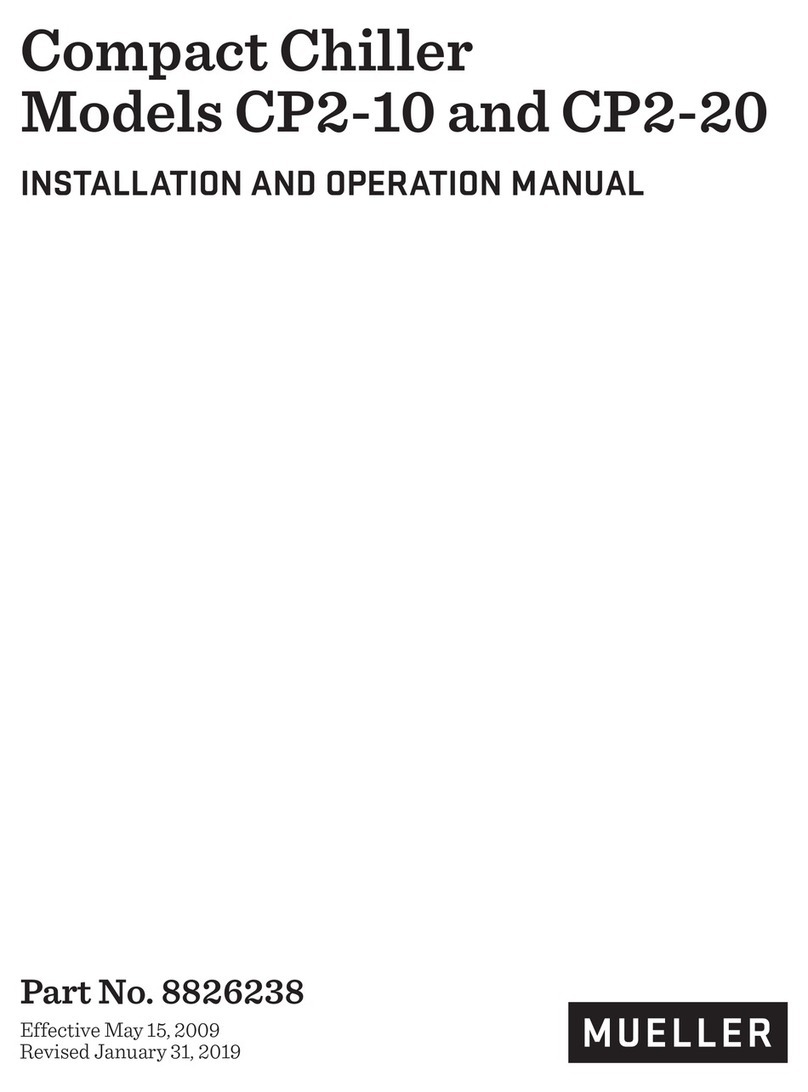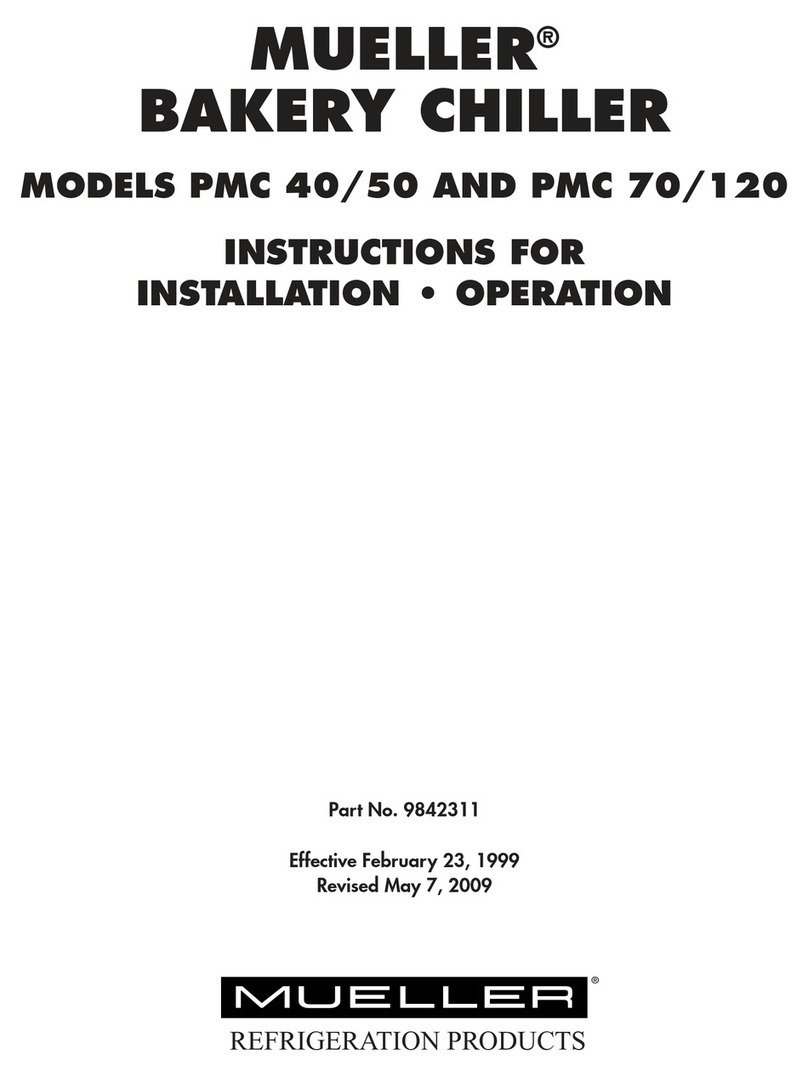
Mueller Compact Chiller, Models CP2-10 and CP2-20 Effective December 21, 2011
Installation and Operation Manual, Part No. 8826880 Revised June 7, 2023
4
2.2 REFRIGERATION COMPONENTS
Mueller CP2 compact chillers are designed to operate with two Mueller 5-horsepower E-Star HiPerForm “HPF/
ESE” condensing units for maximum performance and efficiency. Refer to the E-Star HiPerForm “HPF/ESE”
condensing unit manuals for technical information.
2.3 EVAPORATOR
The Mueller compact chiller uses two totally enclosed, heavy-duty, stainless steel evaporators to provide years
of trouble-free operation when properly installed and controlled. However, like any low-temperature chiller
evaporator, the compact chiller may be susceptible to damage not covered by the warranty if the chilled liquid
solution is allowed to freeze.
Mueller compact chillers are not designed to operate at chilled solution temperatures below 1.11°C without
properly protecting the system with a 20% (–7.5°C) to 25% (–10°C) mixture of Dowfrost propylene glycol. If a
propylene glycol other than Dowfrost is used, the mix ratio must achieve a –9°C freeze point.
IMPORTANT: The circulation of a controlled warm water or a completely drained evaporator is
mandatory during pump down or refrigerant recovery to eliminate evaporator damage due to freezing.
2.4 LIQUID SOLUTION FLOW COMPONENTS
• A 3-horsepower centrifugal pump circulates chilled solution from the reservoir, through the evaporator heat
exchangers and remote Accu-Therm plate cooler, and back to the reservoir.
• The chilled-liquid circulation system incorporates a threaded suction screen, located internally in the
reservoir at the suction connection. This screen prevents particulate matter from entering the circulation
pump, evaporator heat exchangers, and Accu-Therm plate cooler. Remove the screen and clean as needed.
• Isolation valves are provided in the liquid solution lines for servicing the pump.
• The system has two liquid solution flow switches that utilize normally open (NO) contacts connected in series
to the chiller control. In the event of a pump failure, flow blockage, or loss of liquid solution, the paddle in one
of the flow switches will open and de-energize both of the condensing units, indicating a flow restriction. The
condensing units will re-energize when the switch is closed again, indicating adequate fluid flow.
IMPORTANT: If an event indicating a flow restriction occurs, a service technician should be contacted
to troubleshoot and repair the cause prior to multiple restarts.
IMPORTANT: The above condition could be caused by improper temperature settings in the electronic
temperature control. Multiple restarts prior to repair or adjustment could cause failure of an
evaporator due to expansion from freezing, not covered by the warranty.
• The 340-liter insulated reservoir is constructed of polyethylene. The cover should remain on the reservoir at
all times to prevent particulate and contaminants from entering the liquid solution.

































